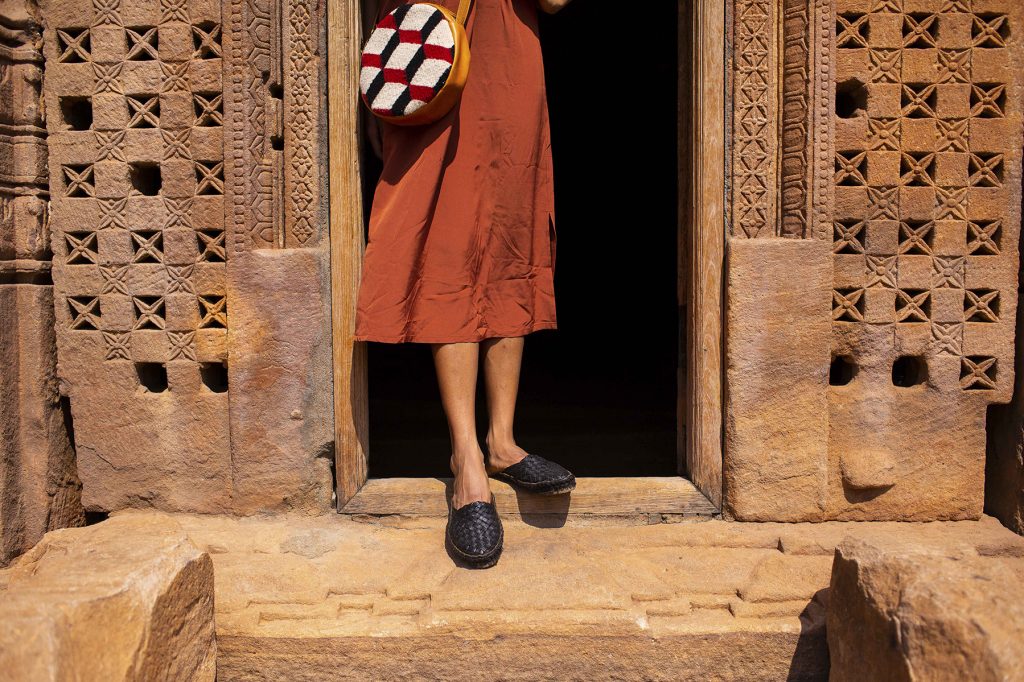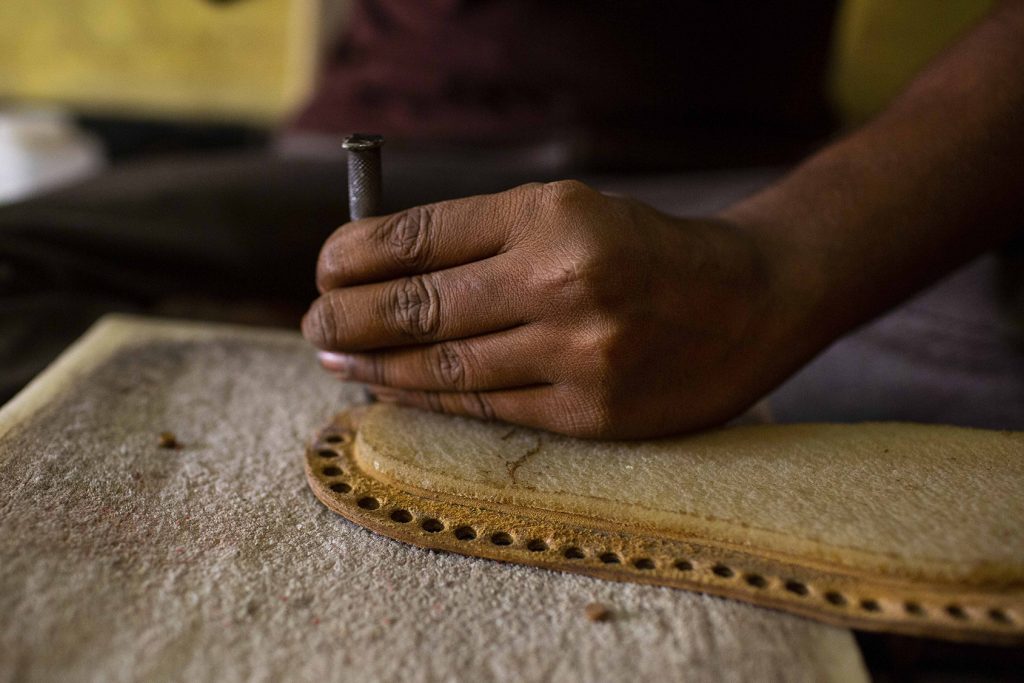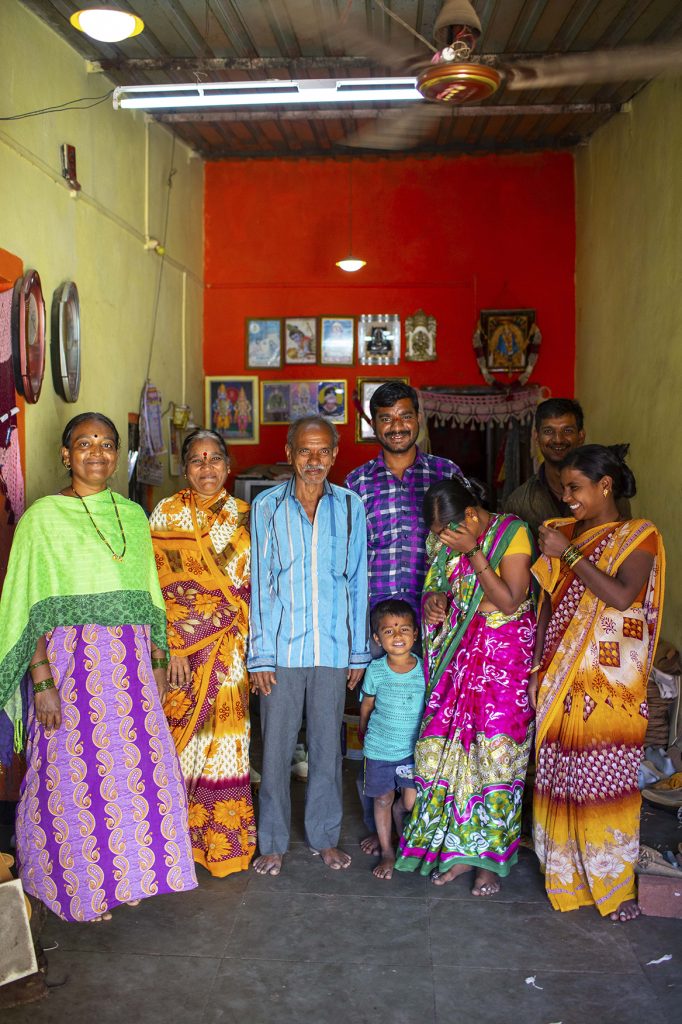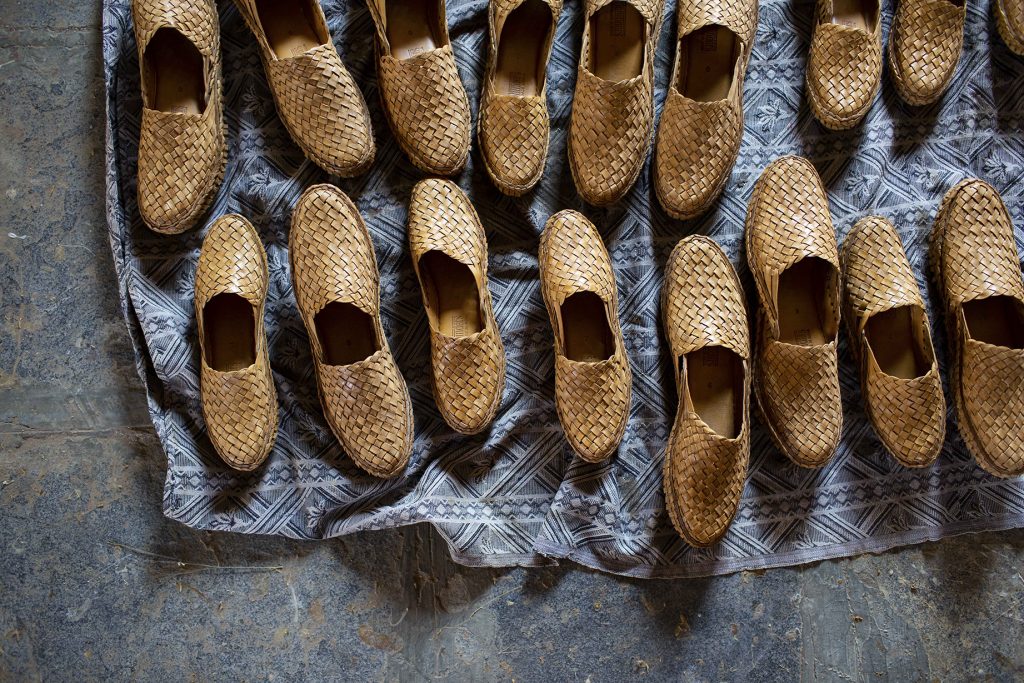“Where do you get them made?”
We’re often asked this seemingly simple question at Mohinders, and in answering it, we find ourselves delving into bigger concepts: How are things made? Who gets the credit for their designs? Are we honoring the origins of the garments we wear?
In 2018, a conversation with friend and photographer Sana Javeri Kadri prompted us to ask whether most people who wear Mohinders really know the geographic and cultural origins of our handwoven shoes.
Each pair of Mohinders is made by a cooperative of master shoemakers in Athani, India. For generations, families in Athani have made these regional shoe designs, which are unique to Athani and the surrounding region of Northern Karnataka. So, while a pair of our shoes comes with key updates to reinstate the shoes’ original quality — and we release new, collaborative shoe concepts — these designs existed long before our company did.

Sana, who spends a month in India each winter for her company’s turmeric harvest, proposed an enticing idea: retrace her childhood road trips from Mumbai to Northern Karnataka, making a photo journal to illustrate our shoes’ place of origin.
So, in February, I hopped on a plane (then into a car and many rickshaws) to roam the dusty roads, sandstone cliffs and surprising nooks of Northern Karnataka.
At dusk on the first day, we approached Badami, about 400 miles southwest of Mumbai. The view turned from arid and flat to vibrant and jagged; coppery-red outcroppings jutted upward with strands of ochre in mesmerizing wavy shapes.

We woke up early for dosas, sambar and coconut chutney. Ganesha, a rock climbing guide, rolled up to meet us by motorcycle, his backpack full of gear and ropes. When we arrived at the climbing spot, perched above town, he set up a warmup route and then a more challenging climb before showing us his favorite route, named after him.
We jumped across town to our next stop: cave temples. Badami was the regal capital of the Chalukya dynasty, and intricate structures from that period remain, carved into the hillside around Agasthya Lake. We wandered for the afternoon, admiring images carved into sandstone and welcoming cool air in the caves. From there, we drove to Kolhapur, passing sunflower fields and the Krishna River.

Kolhapur is a hub known for deep-red spice blends, a wrestling school and streets lined with Kolhapuri chappals, elaborate leather sandals made here since the 13th century. We quickly found ourselves in the back room of a chappal stand, passing around a pair of my own Mohinders. A few merchants discussed its woven, closed-toe design. They said it began as an offshoot of Kolhapuri shoe culture in the last couple centuries and soon became synonymous with Athani, where we’d end the trip.
Tractors loaded with sugarcane rolled past as we bounced in a rickshaw toward Shell Colony, the shoemaking part of town in Athani. Workshops here house foot-pedal sewing machines and stacks of water buffalo hides, tanned in a neighboring town. We heard the metallic swish of hand tools meeting big, smooth sharpening stones as we met with Asha, Prakash and dozens of other master shoemakers.

Generations of craftsmanship here are apparent. Prakash and his son work side by side, differing in their willingness to experiment with the process. With every shoemaker, small actions demonstrate years of experience — done by a master, complex moves take on ease and precision.
Athani-made footwear is growing in recognition and being worn by people around the world. Already Mohinders has fans in the U.S., Japan and Australia. We hope these shoes are accompanied by a vivid sense of place as they head into the future — a region of red-rock landscapes, ancient stone temples and centuries of shoemaking.
XX Kristen Rieke Morabito. Images by Sana Javeri Kadri.
This story originally appeared in RANGE Magazine Issue 11: Origins. You can order your copy HERE.
